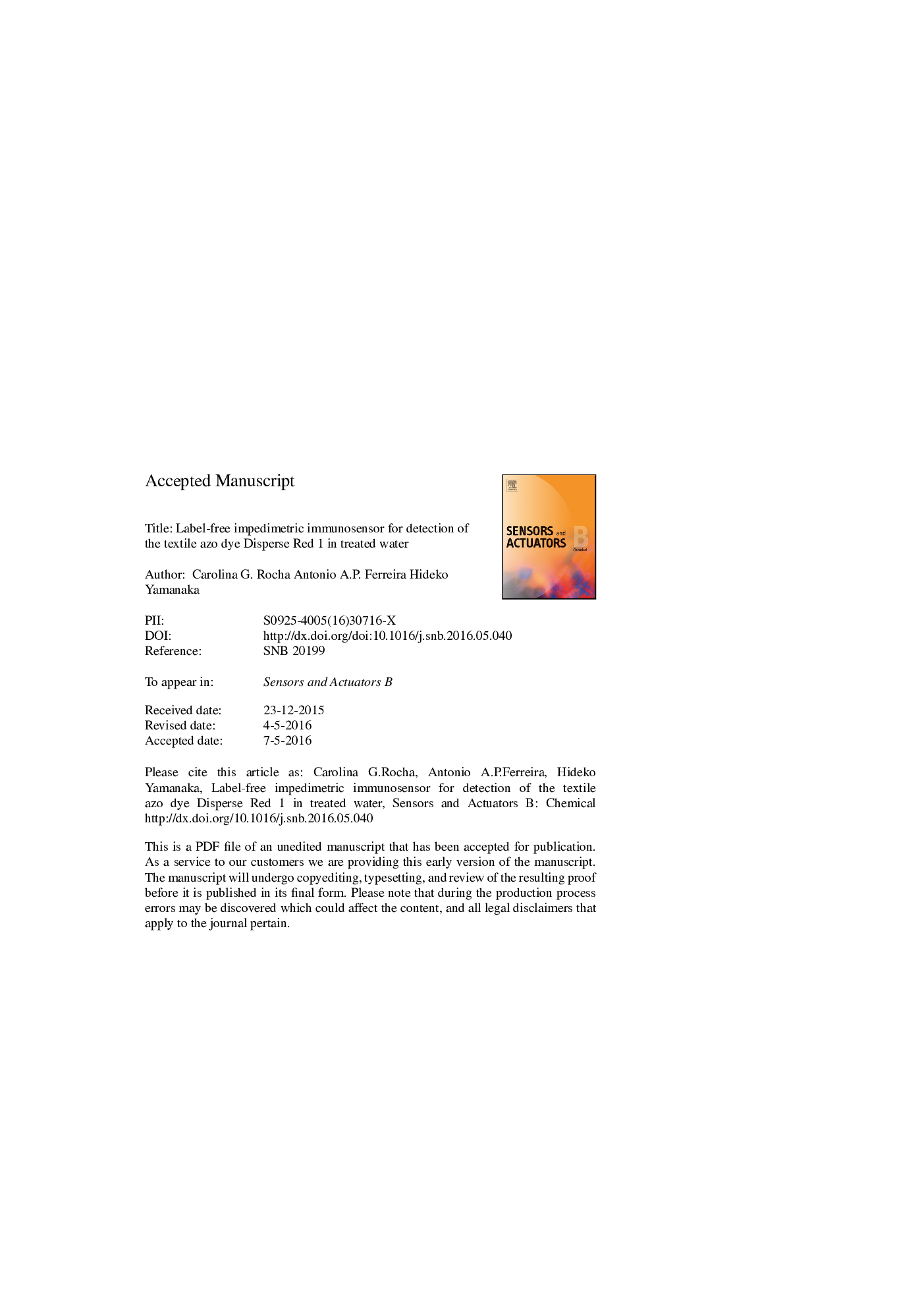| Article ID | Journal | Published Year | Pages | File Type |
|---|---|---|---|---|
| 7142805 | Sensors and Actuators B: Chemical | 2016 | 31 Pages |
Abstract
The development of methodologies to detect and quantify azo dyes in treated water is required because some of these dyes exhibit genotoxic activity, even at low concentrations. Here, the construction and characterization of an impedimetric immunosensor for determination of the textile azo dye Disperse Red 1 (DR1) by means of a label-free assay is reported. Anti-DR1 antibodies (Ab anti-DR1) were successfully coupled to glassy carbon electrode (GCE) surface by bonding using electrochemically generated activated carboxylic groups. The concentration of DR1 was measured by the increase in charge transfer resistance (RCT) when the immune reaction occurred, using Fe(CN)63â/4â as a probe. Electrochemical characterizations of the sensor by cyclic voltammetry (CV) and electrochemical impedance spectroscopy (EIS) were performed, and infra-red spectra were obtained to complement the electrochemical results showing immobilization of the antibodies. Under optimal conditions, the change in RCT presented a linear relationship with DR1 concentration in the range from 8.40 to 100Â nM, and the sensor provided low limit of detection (LODÂ =Â 2.52Â nM) and quantification (LOQÂ =Â 8.40Â nM). No significant interference from other azo dyes was observed. The performance of the immunosensor was evaluated using tap water spiked with 20.0Â nM DR1 and a satisfactory recovery of 98.5% was found. The proposed immunosensor is simple, relatively inexpensive, and shows good sensitivity for this application.
Related Topics
Physical Sciences and Engineering
Chemistry
Analytical Chemistry
Authors
Carolina G. Rocha, Antonio A.P. Ferreira, Hideko Yamanaka,
